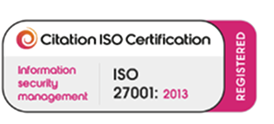5 proven ways to drive job-seeker traffic to your job board
Attracting a steady stream of suitable candidates is the lifeblood of any successful job board. Below are five tried-and-tested strategies to boost your job-seeker traffic—each packed with practical tips you can implement today.
1. Polish your SEO—properly
Google is where nine out of ten job hunts start, so speak its language.
-
Use the phrases real people type.
Tools like Ahrefs or SEMrush will show you plain-English searches such as “entry-level data analyst jobs Leeds”. Work one primary phrase into the page title, opening paragraph, a sub-heading and the meta description. Yoast will light up green when you’ve nailed it.
-
Switch on JobPosting schema in your SEO plugin.
Yoast SEO Premium (and similar plugins) can add the correct markup with one toggle—no code required.
-
Create evergreen pillar content.
Guides like “How to Write a Stand-Out CV” or “UK Salary Benchmarks 2025” pull long-tail traffic and let you link back to live vacancies.
2. Treat social communities as conversations, not billboards
LinkedIn groups, Slack workspaces and Reddit threads are goldmines— if you act like a human being.
-
LinkedIn: Join five niche groups. Spend the first week answering questions; only share links when they genuinely help the discussion. Every Friday, post a quick carousel on your company page—five fresh roles, one swipeable image each.
-
Slack & Facebook: Drop concise summaries in #jobs channels (“Senior UX Designer, Remote UK, £70k + stock—apply here”).
-
Rule of thumb: Help twice, promote once. After a fortnight you’ll be the person people tag when a friend asks, “Know any good remote UX gigs?”
3. Send emails candidates actually want to open
Inbox fatigue is real, but targeted, helpful emails still outperform most channels.
-
Let subscribers pick location, function and seniority at sign-up, so every alert feels tailor-made.
-
Run a three-email welcome series:
-
Day 0: Warm hello + three personalised vacancies.
-
Day 2: Useful resource (CV template, interview tips).
-
Day 5: Reminder to turn on instant job alerts.
-
-
In weekly digests, showcase just three to five hand-picked roles and open with a line that sounds like you:
“Rain forecast all weekend? Perfect excuse to tweak the CV—here are this week’s remote marketing roles.”
4. Borrow other people’s audiences
You don’t need influencer fame—just smart partnerships.
-
Guest posts & backlinks: Pitch an article like “The Hidden Costs of a Bad Job Ad” to an HR-tech blog. You get fresh readers and a quality backlink.
-
Webinars & podcasts: Co-host a 30-minute webinar with an ATS vendor, or appear on a recruitment podcast. Offer listeners a promo code for a free listing.
-
Virtual careers fairs: Sponsor an event such as TechFest Careers UK and direct attendees to a landing page filled with your hottest roles.
5. Spend some money—but keep the leash short
Paid ads can be a money pit or a rocket booster. Keep control with tight budgets and clear metrics.
-
Start small: £30 a day split between Google Search (high-intent phrases like “graduate software jobs Manchester”) and LinkedIn Sponsored Content (targeted by job title and skill).
-
Measure the right thing: Track cost-per-application, not cost-per-click. After two weeks, double down on the better performer and pause the other.
-
Retarget gently: Use your ad platform’s one-click retargeting option so visitors who viewed a role but didn’t apply see a follow-up ad (“That DevOps role you glanced at yesterday? Still open—apply in two clicks.”)
Ready to Fill More Roles?
Pick one tactic—just one—and put it in play this week. Layer on the second next week. Within a month you’ll have a traffic engine humming away.
Tried something that flopped? Brilliant. Cross it off and move on. The candidates you want aren’t waiting around, and neither should you.












